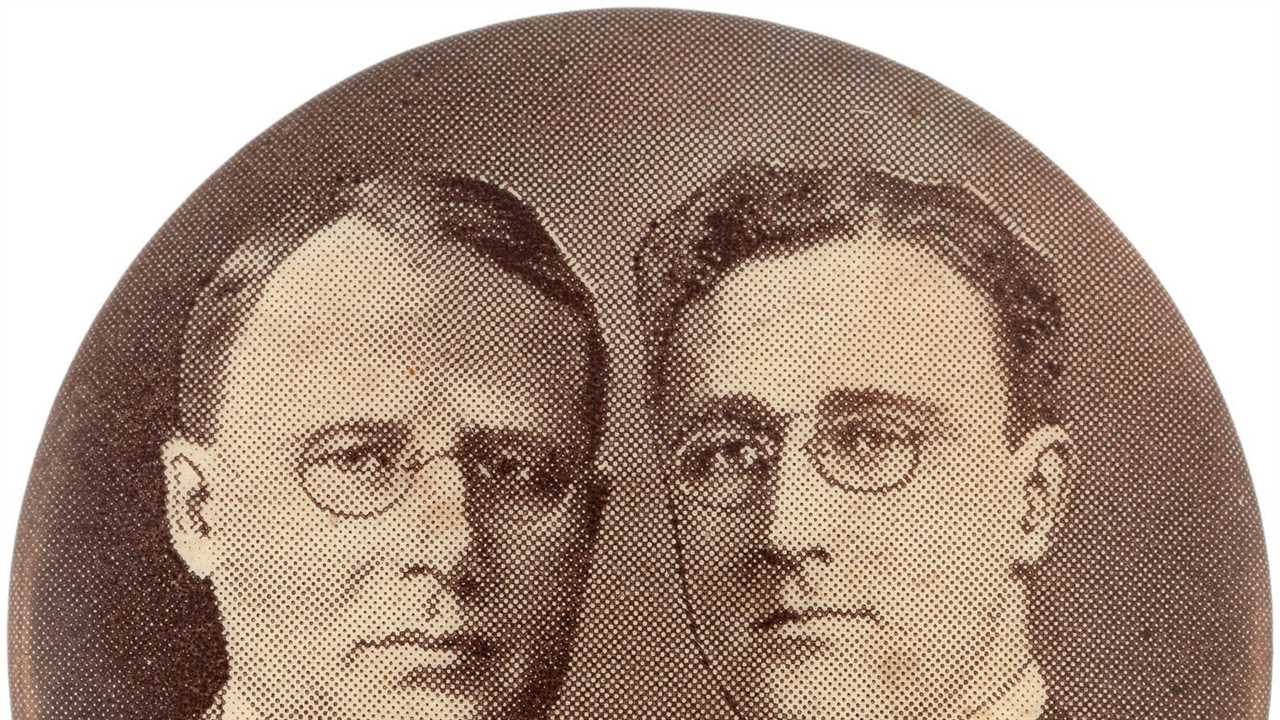
Ted Hake has seen his fair share of memorable campaign tokens since he started his auction business, Hake’s Auctions, in 1967. The peanut-shaped fishing lure with a mouth shaped like Jimmy Carter’s toothy smile stands out. There are also campaign cigars, bottles, plates and lots of ribbons.But a recent procurement might have topped them all: a button with side-by-side images of James Cox, the Democratic nominee for president in 1920, and his running mate, Franklin D. Roosevelt. This week, that button sold for $185,850, a record for Hake’s business.You’d be forgiven for not knowing that Cox ran for president — or for not knowing who he was at all. The Cox presidential campaign has been lost in history. But that also makes memorabilia from that under-the-radar campaign rare — and valuable, in the world of campaign buttons.“Those are kind of the holy grail,” Hake told us. In fact, a pin promoting the 1920 Democratic presidential ticket set a record of its own decades ago, when it went for about $30,000.But Hake, who lives in York, Pa., and started his hobby by collecting Lincoln pennies as a child, told us there were a multitude of one-of-a-kind buttons.In his button book — yes, of course there’s a button book — “Button Power: 125 Years of Saying It With Buttons,” Hake writes of buttons as an early form of social media, describing them as “a way to tell others what was on your mind as a tool to help spread an idea.” The 1960s and 1980s were high points for political button popularity, he said. Since the pandemic forced many enthusiasts to stay home, they have focused more on their hobbies. So business has been booming, he said.“America started collecting buttons as soon as they came out in 1896,” Hake said. “And they really never stopped.”History that never happened
Some of the most iconic political buttons are for victorious presidential campaigns — “I Like Ike” in 1952 stands out. But some of the most sought-after buttons commemorate moments in American history that never actually happened.Take the 1920 election.Cox and Roosevelt lost — by a lot. Warren Harding won the election, beginning a string of Republican administrations that would last through the Great Depression. Buttons that read “I Saw Kennedy in St. Cloud” are also popular — Kennedy never made it to that event, instead delivering an address on the phone. At the time, The New York Times reported that Kennedy couldn’t go because of “inclement weather.” Earlier this year, a button from a scheduled 1956 rally for Eisenhower sold for a few hundred dollars. Eisenhower never showed up at that rally — he had to cancel a string of campaign stops before his re-election to stay in Washington and deal with the Suez crisis.“The story of American history can be told through buttons,” said Adam Gottlieb, who has worked for decades with the American Political Items Collectors, a group that was founded in 1945 to work with collectors of political memorabilia and that continues to hold shows and conventions today. Gottlieb called buttons “as American as baseball and jazz.”Bumper stickers peel off. You can’t wear a lawn sign or even fit it into a drawer. But, even if they get damaged or stained, buttons are forever. Or pretty close to it.“You literally wear your heart on your sleeve,” Gottlieb says. “Or your politics on your lapel.”Measuring value
Scott Mussell, the Americana specialist at Hake’s auction business, told us he’d been working on acquiring the Cox/Roosevelt — the shorthand collectors use to refer to that button — for nearly a decade. The buyer of the Cox/Roosevelt wishes to remain anonymous, Mussell told us. When Mussell was asked how he celebrated the sale, he said he went home and slept. Such is life in the button trade.Mussell’s favorite button in his personal collection wouldn’t sell for nearly as much as the most sought-after ones, like the Cox/Roosevelt. It’s a pin similar to the one that the Rev. Dr. Martin Luther King Jr. wore at the March on Washington while delivering his “I Have a Dream” speech.“It’s not a particularly rare button,” he said, “but it’s an iconic button.”ImageWhat to read
As the United States tries to move on from the pandemic, multiple high-profile politicians have tested positive, Michael D. Shear reports.By calling President Vladimir Putin a “war criminal,” President Biden personalized the Ukraine conflict, David E. Sanger reports.Mark Meadows, who was chief of staff to President Donald Trump, is under investigation for casting an absentee ballot from the address of a remote mobile home, Reid J. Epstein reports.Gov. Kathy Hochul of New York is privately pushing lawmakers to expand the list of crimes eligible for bail and give judges moreBy: Leah Askarinam and Blake Hounshell
Title: Politics Still Pushes Buttons. This One Sold for $185,850.
Sourced From: www.nytimes.com/2022/03/18/us/politics/cox-roosevelt-button-sold.html
Published Date: Fri, 18 Mar 2022 23:00:07 +0000
Read More
 UK PoliticsWorld PoliticsVideosPrivacy PolicyTerms And Conditions
UK PoliticsWorld PoliticsVideosPrivacy PolicyTerms And Conditions
